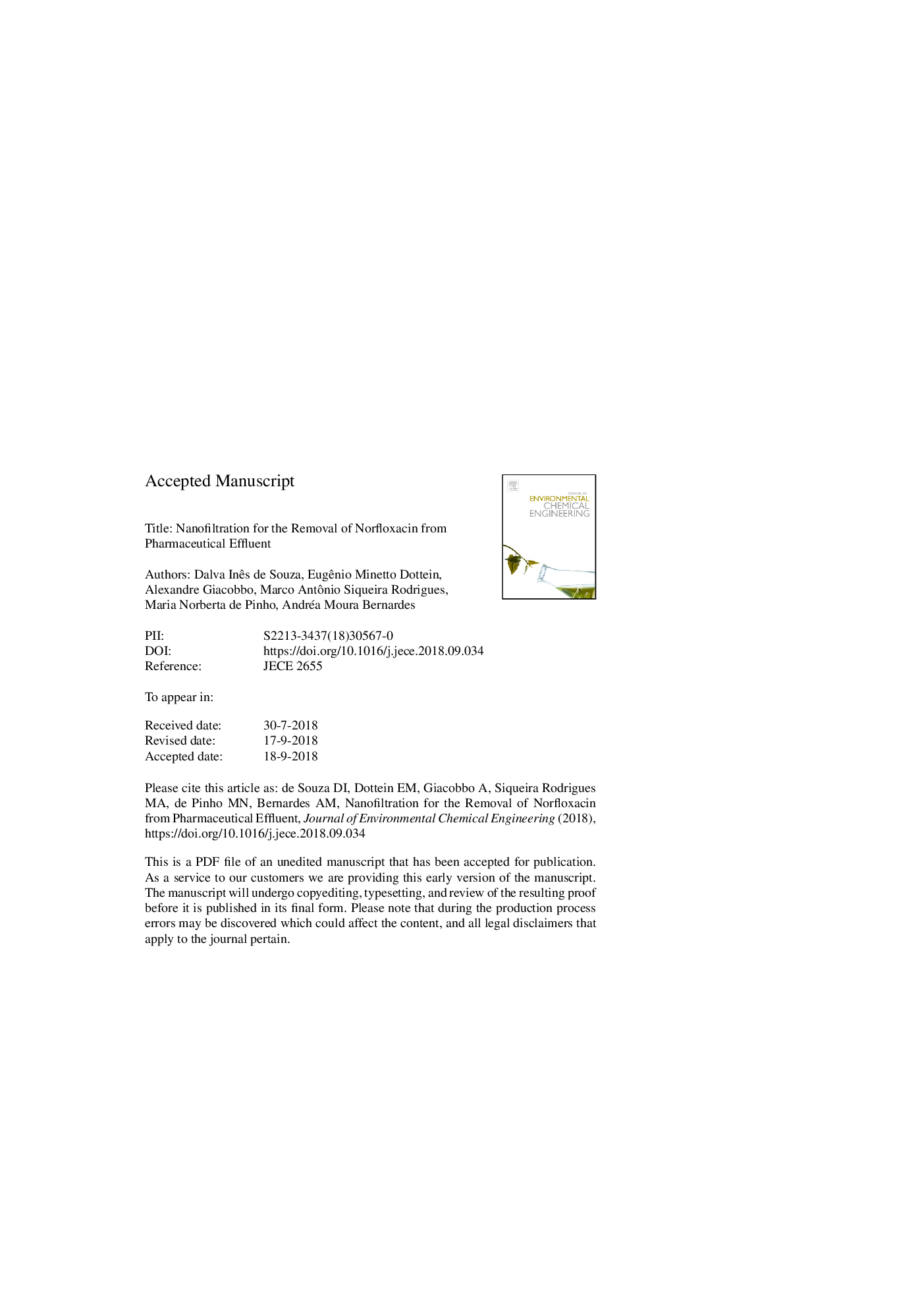| Article ID | Journal | Published Year | Pages | File Type |
|---|---|---|---|---|
| 11028973 | Journal of Environmental Chemical Engineering | 2018 | 19 Pages |
Abstract
Conventional treatment processes have presented low efficiency in removing antibiotics from water and effluents, wherefore the development of processes and technologies to comply with this matter is highly important. Membrane separation processes may be applied in the obtainment of high-quality reuse water, fully or partly removing the pharmaceuticals. Thus, this paper aims to assess the performance of two nanofiltration membranes in removing norfloxacin from a synthetic effluent simulating a pharmaceutical wastewater. Different solution concentrations, transmembrane pressures and pH were evaluated. Both membranes presented high selectivity to norfloxacin, such that the rejection of this antibiotic remained between 87 and 99.5%. The pH had an effect on membranes' selectivity and permeability. The highest norfloxacin rejection and the lowest permeability were reached at pH 6.5, which may be related to electrostatic interactions between membrane surface and norfloxacin ionic species. Considering the elevated rejections obtained in this study (87-99.5%), the viability of nanofiltration stands out in removing norfloxacin from effluents.
Related Topics
Physical Sciences and Engineering
Chemical Engineering
Chemical Engineering (General)
Authors
Dalva Inês de Souza, Eugênio Minetto Dottein, Alexandre Giacobbo, Marco Antônio Siqueira Rodrigues, Maria Norberta de Pinho, Andréa Moura Bernardes,
